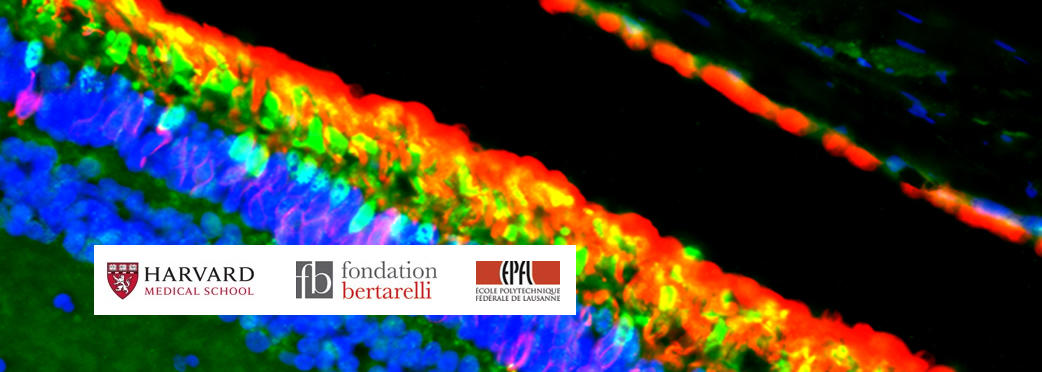
OCTOBER 24, 2014 (Boston, MA): The Bertarelli Program in Translational Neuroscience and Neuroengineering a collaborative program between Harvard Medical School and the École Polytechnique Fédérale de Lausanne (EPFL) in Switzerland, has announced a new set of grants worth $3.6 million for five research projects. This is a further strengthening of the partnership between Harvard and Swiss scientists begun in 2010.

Michael J. Young, PhD, HMS Associate Professor of Ophthalmology, among recipients of grants worth $3.6 million
One of the five projects will pursue new methods for tissue engineering the macula, the center of the retina that lines the back of the eye. Retinal degenerative diseases are leading causes of incurable blindness and are often characterized by loss of the light-sensing photoreceptor cells. Because the regenerative capacity of the retina is extremely limited, cell transplantation strategies hold promise to restore lost function. Researchers have had some success in isolating the progenitor cells that can turn into photoreceptors, yet knowledge of the optimal stage of differentiation for transplantation is lacking.
This project will be conducted in a collaboration between Matthias P. Lutolf of EPFL, Yvan Arsenijevic of Jules-Gonin Eye Hospital, and Michael J. Young, PhD, Associate Professor of Ophthalmology, and Co-director of the Ocular Regenerative Medicine Institute, and Associate Scientist of Schepens Eye Research Institute.
The overall goal is to develop cell lines that could be transplanted into the retina to reverse certain forms of blindness and to discover drugs that could prevent or reverse retinal degeneration. This will be done in three stages: First, researchers will coax progenitor cells to become cone photoreceptors, the type of photoreceptor responsible for color vision and high-acuity vision. Second, researchers will engineer scaffolds that can support the growth and differentiation of these photoreceptors. The third stage is to use such scaffolds as a platform to test potential compounds that can reverse retinal degenerative disorders.
FURTHER READING
